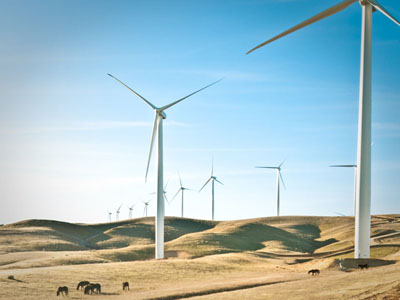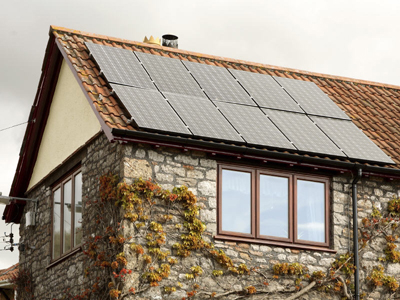Google is abandoning its Renewable Energy Cheaper than Coal initiative, first launched in 2007 via Google.org as an effort to drive down the cost of renewable energy. But it is going to openly share its findings, particularly around its engineering team’s research into concentrated solar thermal (CST) technology.
“We’re publishing our results to help others in the field advance the state of this technology,” said Google yesterday via its Google.org site.
Google says it has “retired” its RE<C initiative but will continue to support renewable energy in other ways, ie, through greening its data centres, by lowering its overall carbon footprint in its facilities globally, and by educating people on how to go about creating a sustainable future, especially through its The Big Picture initiative.
Up to now, via RE<C, Google made several investments in companies that were pioneering potentially breakthrough clean technologies, as well as investing in wind-farm developments and solar projects.
Google said it would still continue to pursue its US$850m plus in investments to further develop and deploy renewable energy technologies.

Alta wind farm in the Mojave Desert in California. Google invested $157m in two projects totalling 270 MW at the Alta Wind Energy Center (AWEC), a wind installation that’s being built in several phases in the Mojave Desert
Here’s a snapshot of some investments:
- Google invested US$$10m in start-up company Brightsource in 2008. It then invested another $168m into Brightsource’s first utility-scale solar project called Ivanpah, in California’s Mojave Desert. Ivanpah looks set to produce 392MW of solar power when it is fully operational in 2013.
- Google took a 37.5pc equity stake in the critical early-stage development of the Atlantic Wind Connection (AWC) backbone, a project to build a superhighway transmission infrastructure off the mid-Atlantic coast.
- Google invested US$75m to create a fund with Clean Power Finance (CPF) to help up to 3,000 homeowners in the US go solar.
- It also invested US$280m in SolarCity, a fund to help provide innovative financing for residential solar projects to make clean energy more widely accessible
- Google’s first investment in a utility-scale renewable energy project was its 2010 US$38.8m cash injection in two wind farms in North Dakota that were being built by NextEra Energy Resources.
- Google has also invested $157m in two projects totalling 270 MW at the Alta Wind Energy Center (AWEC), a wind installation that’s being built in several phases in the Mojave Desert.
- It has invested US$100m in the Shepherd’s Flat wind farm in Arlington, Oregon, which, at 845MW, could be the world’s largest wind farm when it’s completed in 2012.
- Google invested in early stage solar-tech company eSolar.
- Geothermal drilling technology company Potter Drilling is another firm that Google took under its renewables wing.
- The search engine giant also invested in the early stage company Makani Power that is pioneering wind-energy technologies.
- In terms of a US-wide initiative, Google sponsored research to develop the first Geothermal Map of the US.
- Just this year, Google made its first international renewables investment, putting €3.5m (circa US$5m) for a 49pc equity stake in a recently completed solar facility in Brandenburg, Germany.
Google also had a dedicated engineering team working to improve a type of concentrating solar thermal (CST) technology called the solar power tower.
Commenting on the CST technology, Google said earlier this week: “The solar power tower is an exciting technology that works by using a field of mirrors, called heliostats, to concentrate the sun’s rays onto a solar receiver on top of a tower. This generates electricity from the sun’s concentrated heat. It’s been successfully demonstrated in the US and abroad at a small scale. We invested $168m in the world’s largest power tower project under construction – Brightsource’s Ivanpah Solar Electric Generating System (ISEGS). The project is set to be completed in 2013, when it will generate 392MW of clean solar energy.”
Google said its RE<C engineering team focused their research on two areas of solar power technology: reducing the costs associated with heliostats, and reducing the cost and water consumption of the system.
“Our research demonstrates how overall costs could be reduced for this kind of technology.”
The Google post yesterday commented on how the world has witnessed a lot of progress in terms of clean energy in the past few years.
“We’re excited that some technologies are so quickly approaching cost competitiveness with traditional forms of energy in parts of the US and the world. Power tower technology has come a long way, too.”

CST
Google had been supportive and artively researching CST. One reason why Google may have dropped the CST research is because PV is getting very cheap so its is perhaps winning the battle against CST. Also two of the solar tech companies Google invested in – Brightsource and eSolar – both have CST technology and their own receiver designs. so perhaps it didn’t make fiscal sense for Google to stay in the CST game, when these companies have their own enginners trained up in the area.
” … the installed cost of solar photovoltaic technology has declined dramatically over the past few years, making solar photovoltaic technology a compelling choice for consumers,” said Google this week.
Pointing to why it is stepping back from CST, Google said it had “reached a point in our engineering projects where we’re facing new challenges related to our solar receiver design”.
“At this point, other institutions seem better positioned than Google to take this work to the next level. Therefore, we’ve retired our engineering work on RE<C and are sharing our key findings,” the company said.